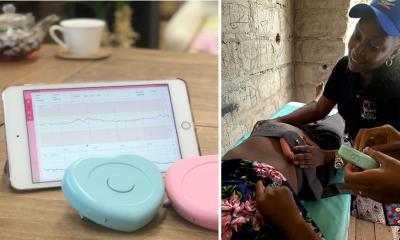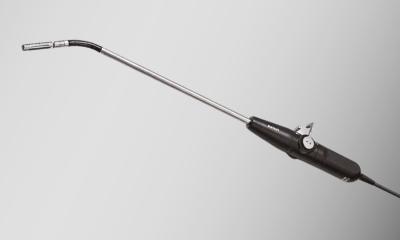Exposanitá
The 15th international healthcare exhibition from 25 to 28 May in Bologna, Italy has expand up to 25,000 sq.m and 20,000 visitors.

The fact that Exposanità maintains an exclusive position in its trade-fair sector is no doubt positive, but this simultaneously represents a great responsibility for the organisers who must satisfy increasing expectations of their customers. Responding to their requests, which are numerable, and being able to respond to visitors’ expectations of quality, will be effective if the event focuses on administrators’ interests.
Initial requests from exhibitors indicate that attendance at the next Exposanità will be very high: confirmations are on the rise, in many cases accompanied by requests for larger exhibiting spaces, which is significant; the will to invest in this fair acknowledges its usefulness.
Although the general theme - healthcare - is totally relevant, and all aspects and specialties are continuously dealt with, through an enormous number of initiatives Exposanità has expanded its exhibition surface to 25,000 sq.m, and counts on 20,000 visitors. It is now the second biggest healthcare fair in Europe, even though Italy does not hold the same rank in terms of expenditure.
However, Exposanitá, which had been the physical reference point for the expression of government and regional healthcare policies, lost that dimension in past years. ‘Despite much success,’ Piero Proni, the event’s project manager explained, ‘our commitment must remain high. In the past, visitors have increased, though not as much as we expected. Considering the development of the exhibition, growth was not significant, particularly in terms of the historical nucleus of the exhibition: hospitals. Unlike other fair events we have organised, it is not easy to make Exposanità the main event in healthcare, the unique and essential opportunity for meetings and high-level situations. Currently, that is the main limitation of Exposanit‡: the overall attitude to their professions by our administrators is lukewarm, with scarce response and inadequate realisation capabilities compared with our proposals.’
The sector seems to promise positive development, so why are there limits to the involvement of the sector within the scope of the event?
'One element of weakness is information: it isn’t easy to directly reach healthcare administrators. Also aspects that concern the commercial mechanisms of the healthcare system have changed: economic choices are no longer simply linked to seasonal requirements. The advantage of holding the fair in May was that the budget was passed in December, the Regional assignments were established in January, with those for the districts in February, then investments were defined. Currently there is a shift from a financial to an economic approach, and that means planning investments for future years. A third significant factor is that the public approach also blights the private healthcare sector.
‘By contrast, during previous Exposanità fairs, the more evident, liveliest features came from more recently introduced sectors of activity: orthopaedics, rehabilitation and equipment for the disabled.
‘When consolidating and launching an event, an element that should not be forgotten relates to the transformation process that has characterised world fairs for some time: shows are no longer the place for commercial exchanges, but are an opportunity for meetings, direct relationships, and encounters among those who belong in the same world.’
What actions have been foreseen to maintain the positioning, respond to expectations and reduce weaknesses?
‘First, to ensure a full overview of the healthcare sector. All fields relate to the competence of a single manager, but refer to many structures, which are also homogeneous and interact among themselves. Any growth in various segments and ensuring their presence may represent a stimulating element and contribute to overall growth. That’s why we are committed to strengthening the nine existing halls and launching a tenth, to present products, technologies and solutions for dental care. If Exposanità wants to be a thoughtful fair, it must undertake new challenges and lead the way in new directions,’ he stressed. ‘I believe it is ethically correct, economically sustainable and also profitable if public healthcare offers a dental service.
‘In addition to featuring a traditional exhibition and congress, our initiative proposes a contribution in implementing a mechanism by which the local units and hospitals will find incentives to reinforce existing services or add new departments to their structures.
‘A second pursuit Exposanità intends to follow is that of kindling collaboration with visitor associations, to involve them more aptly in the event. A more rational re-organisation of the pavilions, and a more compact setting compared with the past, will enable visitors to move around more easily; in addition to the main entrance, in Piazza della Costituzione, there will be a new direct entrance from in front of the large Via Michelino parking lot; exhibitors’ parking on the pavilion roof and heliport, and escalators that make moving easier for people, all these will be further elements aimed at the overall growth of the fair, to make it an all round reference point for healthcare in Italy.’
The halls will showcase medical innovation & technology, including equipment and supplies for diagnostics; IT and telemedicine; the handicapped, orthopaedics, rehabilitation, healthcare humanisation; accident & emergencies; dental and veterinary surgeries. Also, in the Friendly healthcare section, projects and realisations for quality in healthcare services will be reviewed. In addition, a ‘Silver Years’ section will offer ideas, products and services for our aging populations.
01.05.2006









